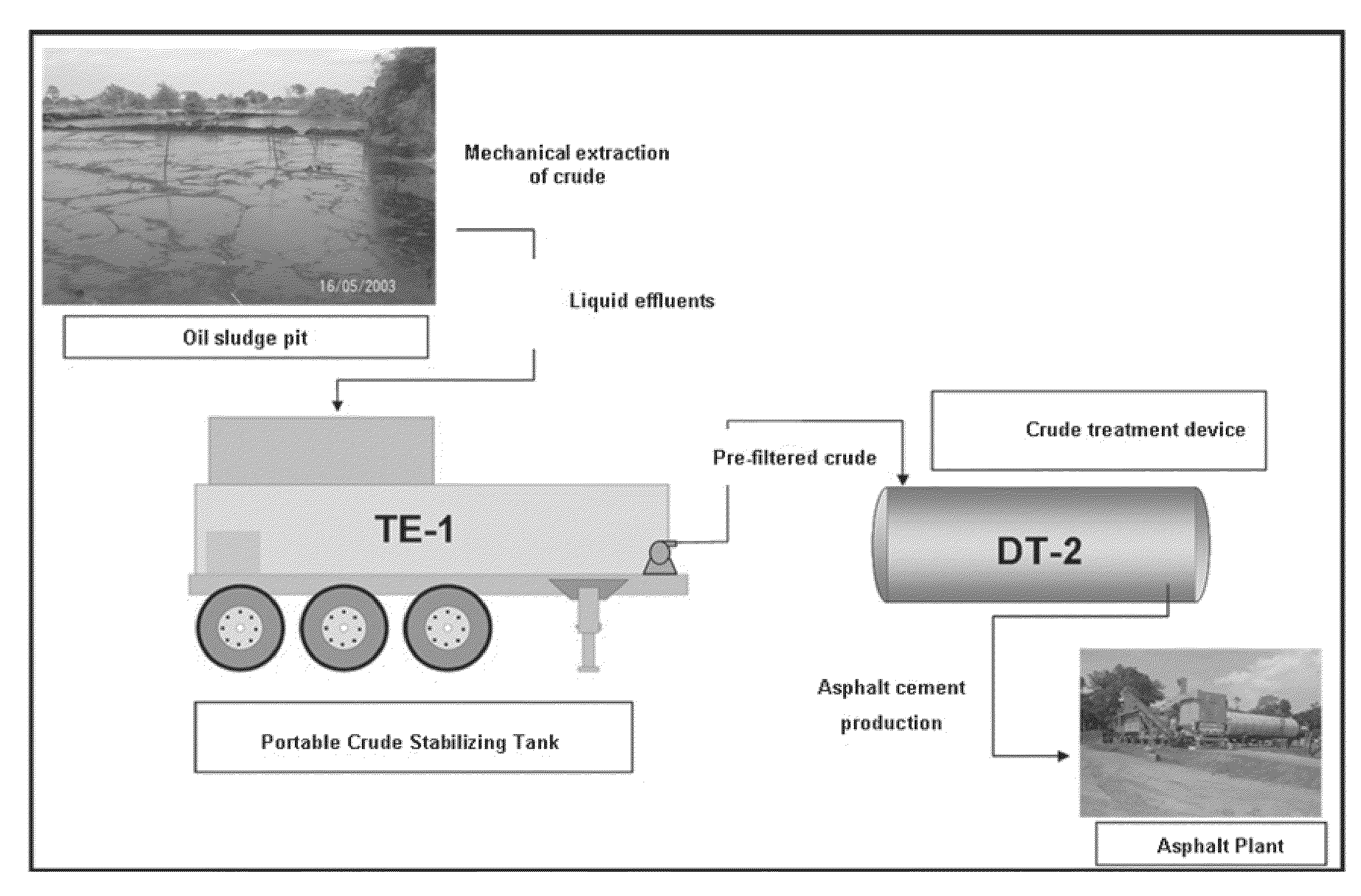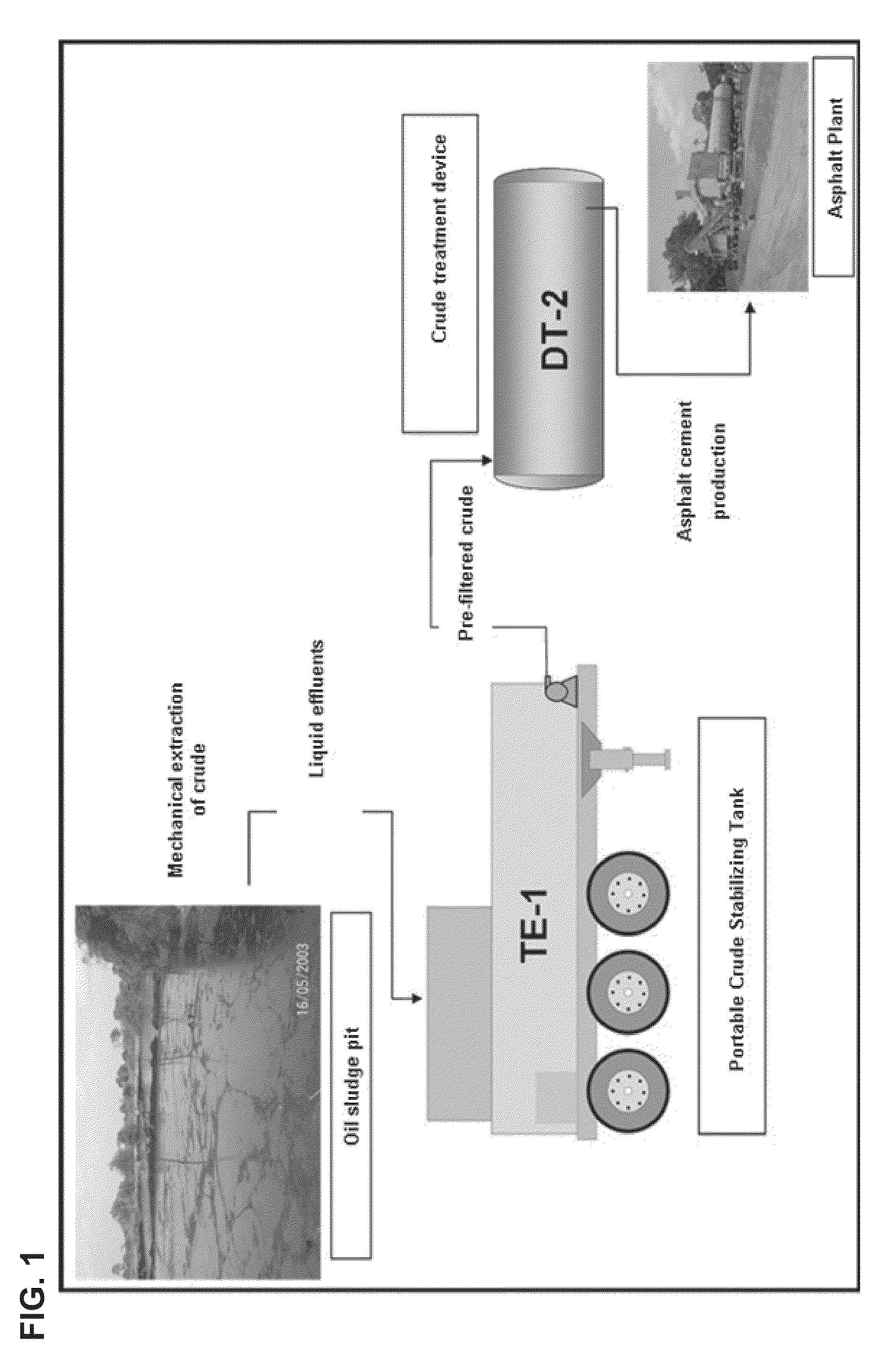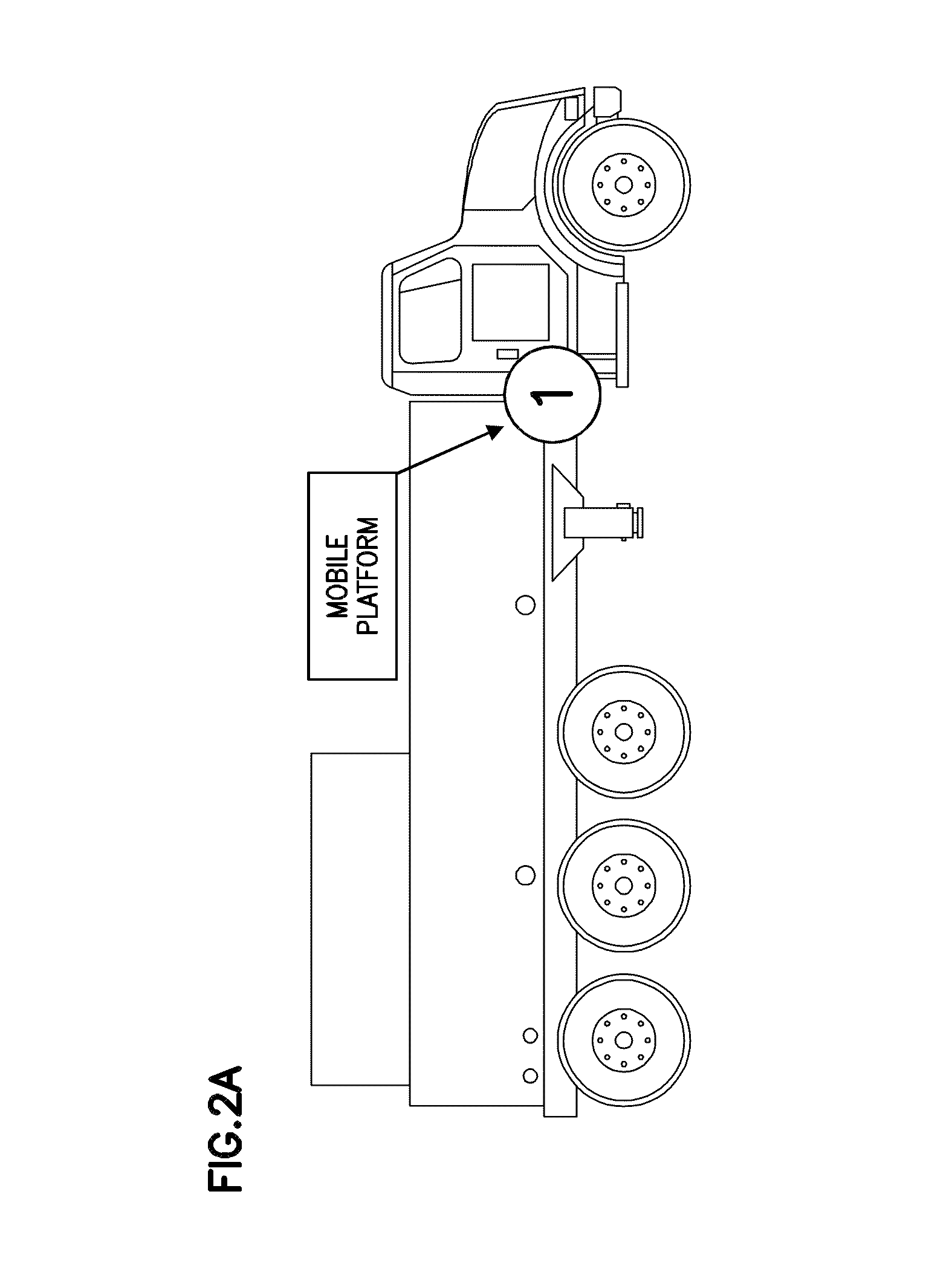Devices for crude oil treatment and upgrading
a technology for crude oil and equipment, applied in the direction of gravity filters, loose filtering material filters, inorganic chemistry, etc., can solve the problems of contamination of crude batches in sales specifications, inaccurate measurement of water content in the mixture, and inability to mix freshly produced crude for dewatering, etc., to achieve the effect of elimination of environmental was
- Summary
- Abstract
- Description
- Claims
- Application Information
AI Technical Summary
Benefits of technology
Problems solved by technology
Method used
Image
Examples
Embodiment Construction
[0029]The Devices for Crude Oil Treatment and Upgrading allow for full use of oil-bearing residues that coexist as environmental waste in the waste pits found in hydrocarbon-producing fields, so that they can used in making asphalt mixtures for building and paving roads, while at the same time the pits are cleaned for the environment.
[0030]This is a novel concept inasmuch the blinding of waste pits as is ordinarily done does not allow for the desired environmental restoration, since generally speaking the oil-bearing residues recovered from them are stored at temporary Handling Centers until final disposal, which so far has not been done in most cases. On the other hand, the proposed method, in addition to contributing to full environmental clean-up of the affected areas, makes it possible to use this oil-bearing waste immediately, converting it to materials suitable for building and paving roads.
[0031]The process whereby the Devices for Crude Oil Treatment and Upgrading are used as...
PUM
| Property | Measurement | Unit |
|---|---|---|
| water content | aaaaa | aaaaa |
| length | aaaaa | aaaaa |
| length | aaaaa | aaaaa |
Abstract
Description
Claims
Application Information
 Login to View More
Login to View More - R&D
- Intellectual Property
- Life Sciences
- Materials
- Tech Scout
- Unparalleled Data Quality
- Higher Quality Content
- 60% Fewer Hallucinations
Browse by: Latest US Patents, China's latest patents, Technical Efficacy Thesaurus, Application Domain, Technology Topic, Popular Technical Reports.
© 2025 PatSnap. All rights reserved.Legal|Privacy policy|Modern Slavery Act Transparency Statement|Sitemap|About US| Contact US: help@patsnap.com



